Amica EKS 361 190 E Handleiding
Bekijk gratis de handleiding van Amica EKS 361 190 E (8 pagina’s), behorend tot de categorie Koelkast. Deze gids werd als nuttig beoordeeld door 19 mensen en kreeg gemiddeld 3.7 sterren uit 10 reviews. Heb je een vraag over Amica EKS 361 190 E of wil je andere gebruikers van dit product iets vragen? Stel een vraag
Pagina 1/8

TM
Arranque con Cables de
Puente a la Batería 450TM
No. de Modelo: PKC0AZ
Manual del Propietario
e Información de Garantía
Lea completamente estas instrucciones antes de usar este producto.
Conserve este Manual del Propietario para referencia futura.
P/N XXXXX, 3/09
1
TM
Battery Jump-Starter
450TM
Model No.: PKC0AZ
Owner’s Manual
and Warranty Information
Read these instructions completely before using this product.
Retain this Owner’s Manual for future reference.
P/N XXXXX, 3/09

2
CONTENTS
SAFETY PRECAUTIONS ................................................................................................................2
Battery Jump-Starter Safety ...................................................................................................2
Battery Jump-Starting Safety ...............................................................................................2-3
INTRODUCTION .............................................................................................................................4
FEATURES ...................................................................................................................................... 4
OPERATION .................................................................................................................................... 5
Checking Jump-Starter Battery Status ................................................................................... 5
Low Charge Alert (LCA) .......................................................................................................... 5
Charging Jump-Starter Battery ...............................................................................................5
110/120-Volt AC Charging ..............................................................................................5
12-Volt DC Charging ......................................................................................................5
Jump-Starting (Negative Ground Systems Only) .................................................................... 6
DC Power Socket Operation ...................................................................................................6
Operating a DC Device ..................................................................................................6
USB Power Outlet Operation ..................................................................................................7
Worklight Operation ................................................................................................................7
TROUBLESHOOTING .....................................................................................................................7
CARE AND MAINTENANCE ...........................................................................................................7
Storage ...................................................................................................................................7
Battery Replacement/Disposal ...............................................................................................7
SPECIFICATIONS ........................................................................................................................... 8
LIMITED WARRANTY .....................................................................................................................8
To Obtain Service ...................................................................................................................8
SAFETY PRECAUTIONS
This safety alert symbol indicates that a potential personal injury hazard is present. The symbol
is usually used with a signal word (e.g., WARNING) which designates the degree or level of hazard
seriousness.
The signal word WARNING indicates a hazardous situation which, if not avoided, could result in
death or serious injury.
The signal word NOTICE indicates a situation which can cause damage to the product, other
personal property and/or to the environment, or cause the product to operate improperly.
The combination of the safety alert symbol and signal word is used in safety messages throughout
this manual and on safety labels on this product.
All safety messages that follow have WARNING level hazards. Failure to
comply could result in death or serious injury.
Battery Jump-Starter Safety
The internal battery in this Battery Jump-Starter is a sealed lead-acid battery. Always wear eye •
protection and exercise caution when working with lead-acid batteries. The battery must be
recycled or disposed of properly.
Perform all Battery Jump-Starter charging procedures (see page 5) in a safe, dry, well-ventilated •
area, as the unit’s battery does produce explosive gases during charging.
Whether stored or in use, keep this Battery Jump-Starter out of reach of children. Close •
supervision is necessary when used near children.
Do not operate this Battery Jump-Starter in rain or snow, or immerse the unit or adapters in water •
or other liquid.
Do not open the Battery Jump-Starter. There are no user-serviceable parts inside the unit.•
Battery Jump-Starting Safety
EXPLOSIVE GASES — Do not use this product in the presence of fl ammable fumes
or gases. Working in the vicinity of a lead-acid battery can cause an explosion of the
battery being charged. When lead-acid batteries are charging, they vent explosive
hydrogen gas which can be ignited by sparks from electrical connections. It is
important to read this manual before charging and follow the jump-start instructions
exactly (see page 6) each time you use this Battery Jump-Starter.
Do not smoke or use fl ammable items (matches, cigarette lighters, etc.) while working on a •
vehicle’s battery system.
Never jump-start a frozen battery, as it could explode.•
2
ÍNDICE
PRECAUCIONES DE SEGURIDAD ................................................................................................2
Seguridad de Arranque con Cables de Puente a la Batería ................................................... 2
Seguridad de Arrancado con Cables de Puente a la Batería ..............................................2-3
INTRODUCCIÓN .............................................................................................................................4
CARACTERÍSTICAS .......................................................................................................................4
OPERACIÓN ...................................................................................................................................5
Chequeo de Estado de la Batería de Arranque con Cables de Puente ..................................5
Alerta de Carga Baja (LCA según sus siglas en Inglés) .........................................................5
Carga de la Batería de Arranque con Cables de Puente ........................................................ 5
Carga de 110/120 Voltios CA .........................................................................................5
Carga de 12 Voltios CC ..................................................................................................5
Arranque con Cables de Puente (Sólo Sistemas de Tierra Negativa) ....................................6
Operación de un Enchufe Hembra de Energía CC .................................................................6
Operación de un Dispositivo de CC ...............................................................................6
Operación del Tomacorriente de Energía USB .......................................................................7
Operación de Luces de Trabajo ..............................................................................................7
RESOLUCIÓN DE PROBLEMAS ...................................................................................................7
CUIDADOS Y MANTENIMIENTO ....................................................................................................7
Almacenaje .............................................................................................................................7
Reemplazo / Descarte de la Batería .......................................................................................7
ESPECIFICACIONES .....................................................................................................................8
GARANTÍA LIMITADA .....................................................................................................................8
Para Obtener Servicio .............................................................................................................8
PRECAUCIONES DE SEGURIDAD
Este símbolo de alerta de seguridad indica que está presente un peligro potencial de lesión
personal. Este símbolo es usualmente usado con la palabra de señalamiento (por ejemplo,
ADVERTENCIA) la cual designa el grado o nivel de seriedad del peligro.
La palabra de señalamiento ADVERTENCIA indica una situación peligrosa que, si no se evita, puede
resultar en la muerte o en lesiones serias.
La palabra de señalamiento AVISO indica una situación que puede causarle daño al producto, otra
propiedad personal y/o al medio ambiente, o causar que el producto funcione de manera incorrecta.
La combinación del símbolo de alerta de seguridad y la palabra de señalamiento es usada en
mensajes de seguridad a lo largo de este manual y etiquetas de seguridad en este producto.
ADVERTENCIA Todos los mensajes de seguridad que siguen tiene niveles de seguridad de
ADVERTENCIA. El no cumplir puede resultar en la muerte o en lesiones serias.
Seguridad de Arranque con Cables de Puente a la Batería
La batería interna en este Arranque con Cables de Puente a la Batería es una batería sellada •
de plomo-ácido. Siempre use protección para los ojos y tenga precaución cuando trabaje con
baterías de plomo-ácido. La batería tiene que ser reciclada o desechada apropiadamente.
Ejecute todos los procedimientos de carga del Arranque con Cables de Puente a la Batería (vea la •
página 5) en una área bien ventilada, seca y segura, p2-ya que la batería de la unidad produce gases
explosivos durante la carga.
Mantenga este Arranque con Cables de Puente a la Batería lejos del alcance de los niños cuando •
esté almacenado o en uso. Es necesaria una supervisión cercana cuando se use cerca de los
niños.
No opere este Arranque con Cables de Puente a la Batería en la lluvia o en la nieve, o sumerja la •
unidad o los adaptadores en agua o en cualquier otro líquido.
No abra el Arranque con Cables de Puente a la Batería. No hay dentro de la unidad piezas •
reparables por el usuario.
Seguridad de Arrancado con Cables de Puente a la Batería
GASES EXPLOSIVOS — No use este producto en presencia de vapores o gases
infl amables. El trabajar cerca de una batería de plomo-ácido puede causar que la
batería que se está cargando explote. Cuando las baterías de plomo-ácido están
cargando, ellas despiden gas de hidrógeno, el cual puede ser encendido por chispas
de conexiones eléctricas. Es importante leer este manual antes de cargar una batería
y seguir exactamente las instrucciones de arranque con cables de puente (vea la
página 6) cada vez que use el Arranque con Cables de Puente a la Batería.
No fume o use artículos infl amables (fósforos, encendedores de cigarrillos, etc.) mientras trabaja •
en el sistema de batería de un vehículo.
Nunca arranque con cables de puente una batería congelada, ya que puede explotar.•
Ejecute el procedimiento de arranque con cables de puente en una área bien ventilada, seca y •
segura.

3
No exponga la batería al fuego o al calor intenso ya que puede explotar. •
Antes de reciclar o desechar la batería, proteja los terminales descubiertos con cinta aislante •
eléctrica para evitar cortocircuitos (cortocircuitos puede resultar en heridas corporales o en un
incendio).
Cuando use este producto, siempre use gafas para proteger los ojos. El contacto con el ácido de •
la batería podrá causar ceguera y/o quemaduras químicas severas.
Siga estos procedimientos de primeros auxilios en caso de contacto accidental con ácido de •
batería.
PRIMEROS AUXILIOS
PIEL: Lávese la piel completamente si el ácido de batería entra en contacto con la piel. Obtenga
inmediatamente atención médica.
OJOS: Enjuáguese los ojos con agua fría durante por lo menos diez minutos. Obtenga
inmediatamente atención médica.
SI SE INGIERE, PÓNGASE INMEDIATAMENTE EN CONTACTO
CON UN CENTRO DE CONTROL DE ENVENENAMIENTO.
Nunca toque las pinzas de la batería entre sí o contra un pedazo de metal común. Podrá resultar •
en chispas, explosión o daños a la unidad. Después de usar las pinzas, guárdelas siempre en los
montantes ubicados en la parte trasera de la unidad.
Coloque esta unidad tan lejos de la batería que se esta cargando como lo permitan los cables de •
carga.
Cuando use el Arranque con Cables de Puente a la Batería cerca de la batería y del motor del •
vehículo, coloque la unidad sobre una superfi cie plana y estable, mantenga todas las pinzas,
cordones, ropa y partes del cuerpo alejados de las piezas en movimiento del vehículo.
Siga estas instrucciones y aquellas publicadas por el fabricante de la batería y por el fabricante de •
cualquier equipo que usted intente usar cerca de la batería. Antes de cargar, préstele atención a
las precauciones de peligro en estos productos y en el motor.
Este sistema fue diseñado para ser usado sólo en vehículos con sistema de batería de 12 voltios •
CC. a un sistema de batería de 6 ó 24 voltios.No lo conecte
Quítese todas las joyas y objetos metálicos que pudieran causar cortocircuitos o reaccionar •
con el ácido de la batería. Una batería de plomo-ácido produce una corriente de cortocircuito
sufi cientemente alta como para soldar un anillo u otro objeto similar al metal, causando una
quemadura severa.
Cuando trabaje en equipos eléctricos, siempre tenga a alguien cerca para que lo ayude en caso •
de una emergencia.
Mantenga a mano una buena cantidad de carbonato de sodio (baking soda) cuando trabaje con •
baterías. El carbonato de sodio neutraliza el electrolito de las baterías de plomo-ácido.
AVISO Todos los mensajes que siguen tiene niveles de peligro de AVISO. El no cumplir
puede resultar en daños a la propiedad.
Los vehículos que tiene sistemas computarizados a bordo pueden sufrir daños si la batería •
del vehículo es arrancada con cables de puente. Antes de arrancar con cables de puente, lea
el manual del propietario del vehículo para confi rmar si la asistencia de arranque externa es
apropiada.
El darle arranque excesivamente al motor puede dañar el motor de arranque. Si el motor falla •
en arrancar después de el número recomendado de intentos, descontinúe el procedimiento de
arranque con cables de puente y busque otros problemas que necesiten ser corregidos.
Este Arranque con Cables de Puente a la Batería • no fue diseñado para que se use como
reemplazo de la batería del vehículo. No intente operar un vehículo que no tenga una batería
instalada.
Después de conectar las pinzas de carga de batería en la batería descargada y antes de •
encender el interruptor de ON/OFF de arranque con cables de puente, verifi que la luz del
indicador de energía/polaridad ubicada en el frente de la unidad. Si la luz se enciende en VERDE,
las conexiones de las pinzas están correctas. Si la luz se enciende en ROJO y la alarma suena,
las conexiones de las pinzas están incorrectas y necesitan ser invertidas.
Este Arranque con Cables de Puente a la Batería se entrega en un estado de carga parcial. •
Cargue completamente la unidad con el cargador de 110/120 voltios CA suministrado al máximo
recomendado y tiempo de carga inicial de 36 horas. En lo sucesivo, un tiempo de carga CA típico
es de 18 a 24 horas cuando se usa el cargador CA.
No exceda• el máximo recomendado y el tiempo de carga inicial de 24 horas usando el método de
12 voltios CC.
Aunque esta unidad contiene una batería sellada, se recomienda que la unidad sea mantenida •
de pie durante su almacenaje, uso y recarga. Para evitar posibles daños que le pueden acortar la
vida de trabajo a la unidad, protéjala de la luz solar directa, calor directo y/o humedad.
Nunca permita que el ácido de batería entre en contacto con esta unidad.•
Todos los interruptores de ON/OFF deben estar en la posición OFF cuando el Arranque con •
Cables de Puente a la Batería esté siendo cargado o no esté siendo usado. Asegúrese de que
todos los interruptores estén en la posición OFF antes de conectar la unidad a una fuente de
energía o carga.
No use ningún accesorio que no sea recomendado o suministrado por el fabricante.•
3
Perform all jump-starting procedures in a safe, dry, well-ventilated area.•
Do not expose battery to fi re or intense heat since it can explode. •
Before recycling or disposing of a battery, protect exposed terminals with heavy-duty electrical tape •
to prevent shorting (shorting can result in personal injury or fi re).
Always wear protective eyewear when using this product. Contact with battery acid can cause •
blindness and/or severe chemical burns.
Follow these fi rst aid procedures in case of accidental contact with battery acid.•
FIRST AID
SKIN: Wash skin thoroughly if battery acid comes in contact with skin. Seek medical attention
immediately.
EYES: Flush eyes with cool water for at least ten minutes. Seek medical attention immediately.
CONTACT POISON CONTROL CENTER IMMEDIATELY IF INGESTED.
Never touch battery clamps together or to a common piece of metal. Sparking, explosion, or •
damage to the unit can result. Always store the battery clamps on the appropriate case clamp
posts on the back of the unit after use.
Place this unit as far away from the battery being charged as the charging cables will permit.•
When using the Battery Jump-Starter close to the vehicle’s battery and engine, place the unit on a •
fl at, stable surface, and keep all clamps, cords, clothing and body parts away from moving parts of
the vehicle.
Follow these instructions and those published by the battery manufacturer and manufacturer of •
any equipment you intend to use near the battery. Pay attention to all hazard precautions on these
products and on the engine before charging.
This system is designed to be used only on vehicles with a 12-volt DC battery system. Do • not
connect to a 6-volt or 24-volt battery system.
Remove all jewelry or metal objects that could cause short circuits or react with battery acid. A •
lead-acid battery produces a short-circuit current high enough to weld a ring or other similar
objects to metal, causing a severe burn.
When working on electrical equipment, always ensure someone is nearby to help you in an •
emergency.
Keep a supply of baking soda on hand when working on batteries. Baking soda neutralizes lead-•
acid battery electrolyte.
All messages that follow have NOTICE level hazards. Failure to comply could
result in property damage.
Vehicles that have on-board computerized systems may be damaged if vehicle battery is jump-•
started. Before jump-starting, read the vehicle’s owner’s manual to confi rm that external-starting
assistance is suitable.
Excessive engine cranking can damage a vehicle’s starter motor. If the engine fails to start after •
the recommended number of attempts, discontinue these jump-start procedures and look for other
problems that may need to be corrected.
This Battery Jump-Starter is • not designed to be used as a replacement for a vehicle’s battery. Do
not attempt to operate a vehicle that does not have a battery installed.
After connecting the battery charging clamps to the discharged battery and before turning on the •
jump-starter ON/OFF switch, check the power/polarity indicator light on the front of the unit. If the
light turns GREEN, the clamp connections are correct. If the light turns RED and an alarm sounds,
the clamp connections are incorrect and need to be reversed.
This Battery Jump-Starter is delivered in a partially charged state. Fully charge unit with the •
supplied 110/120-volt AC charger to the recommended maximum and initial charge time of 36
hours. Thereafter, an AC typical charge time is 18 to 24 hours when using the AC charger.
Do • not exceed the recommended maximum and initial DC charge time of 24 hours using the
12-volt DC method.
Although this unit contains a sealed battery, it is recommended that unit be kept upright during •
storage, use and recharging. To avoid possible damage that may shorten the unit’s working life,
protect it from direct sunlight, direct heat and/or moisture.
Never allow battery acid to come in contact with this unit.•
All ON/OFF switches should be in the OFF position when charging the Battery Jump-Starter or •
when not in use. Make sure all switches are in the OFF position before connecting to a power
source or load.
Do not use any accessory that is not recommended or provided by the manufacturer.•
Product specificaties
| Merk: | Amica |
| Categorie: | Koelkast |
| Model: | EKS 361 190 E |
Heb je hulp nodig?
Als je hulp nodig hebt met Amica EKS 361 190 E stel dan hieronder een vraag en andere gebruikers zullen je antwoorden
Handleiding Koelkast Amica
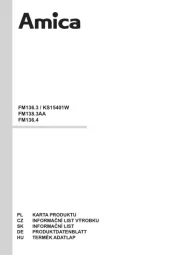
3 September 2025
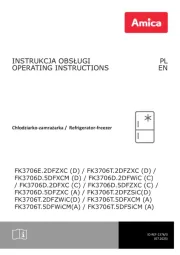
14 Augustus 2025
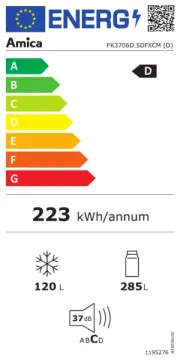
14 Augustus 2025
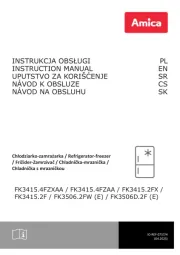
5 Augustus 2025
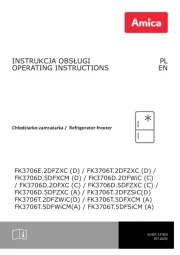
5 Augustus 2025
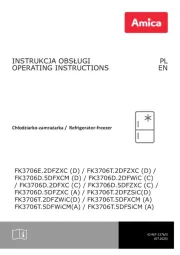
5 Augustus 2025
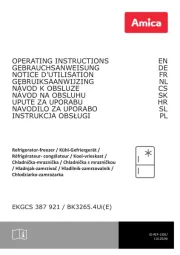
5 Augustus 2025
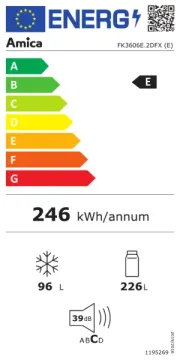
5 Augustus 2025
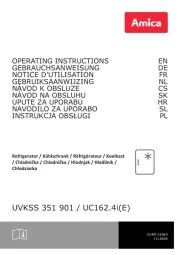
5 Augustus 2025
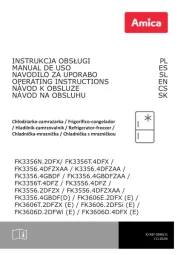
5 Augustus 2025
Handleiding Koelkast
- Vollrath
- Eqtemp
- NewAir
- Akai
- Aldi
- FAR
- Kucht
- Caple
- Denver
- Franke
- Fridgemaster
- Carrefour Home
- Cuisinart
- Thomson
- Gasfire
Nieuwste handleidingen voor Koelkast
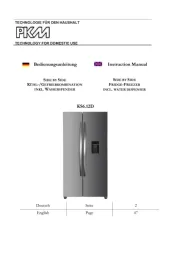
16 September 2025
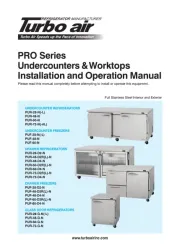
16 September 2025
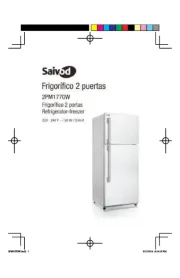
16 September 2025
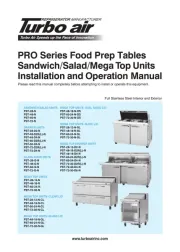
15 September 2025
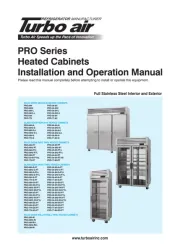
15 September 2025
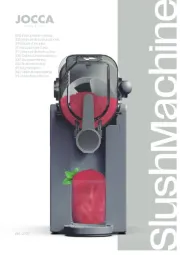
15 September 2025
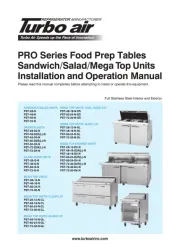
15 September 2025
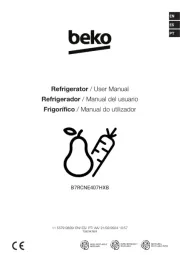
15 September 2025
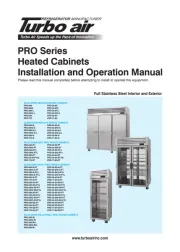
15 September 2025
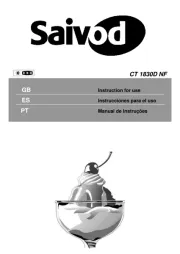
15 September 2025